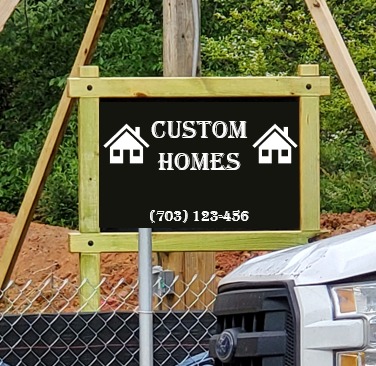The Fairfax County Department of Planning and Development (DPD) has recently issued an interpretation related to minor signs permitted during active construction or alteration on single‑family residential lots. This interpretation clarifies the meaning of “commencement of construction” for the purpose of this provision.
 The Fairfax County Department of Planning and Development (DPD) has recently issued an interpretation related to minor signs permitted during active construction or alteration on single‑family residential lots. Per Subsection 7100.4.C(2) of the Zoning Ordinance, limited signage is permitted during construction or alteration, but signs cannot be displayed “before commencement” of the improvement or renovation work.
The Fairfax County Department of Planning and Development (DPD) has recently issued an interpretation related to minor signs permitted during active construction or alteration on single‑family residential lots. Per Subsection 7100.4.C(2) of the Zoning Ordinance, limited signage is permitted during construction or alteration, but signs cannot be displayed “before commencement” of the improvement or renovation work.
This interpretation clarifies the meaning of “commencement of construction” for the purpose of this provision.
A copy of this interpretation is available below. If you have any questions, please contact the Fairfax County Ordinance Administration Section at 703-324-1314 or by email.
SUBJECT: Minor Signs Permitted During Active Construction or Alteration on Single-Family Residential Lots ZO
REF: Subsection 7100.4.C(2)
Subsection 7100.4.C(2) of the Zoning Ordinance allows limited signage for individual single-family dwelling units undergoing construction, improvement, or renovation. Specifically, one sign not exceeding four square feet in area or a height of four feet is permitted. This sign cannot be displayed “before commencement” of the improvement or renovation work. Based on complaints received by the Department of Code Compliance, signs are often erected prior to what would be considered commencement of the improvement or renovation activity. Many reported instances involve the placement of a sign immediately following the purchase of the property, which often occurs six to eight weeks prior to commencement of construction. For the purposes of this specific provision, examples of commencement of construction include:
- Clearing, grading, or excavation work to prepare the site for construction
- Actively demolishing structures on-site or features internal to the dwelling as part of a renovation project
- The delivery and staging of materials or equipment on-site, including both internal and external staging (such as the placement of a dumpster on the property or storage of new cabinetry and associated hardware)
- Any other similar activity involving active engagement in improvements on the property
The sole act of issuance of a building permit is not considered commencement of the improvement or renovation work. Placement of a sign on the property prior to commencement of the construction, improvement, or renovation activity may result in issuance of a Notice of Violation.